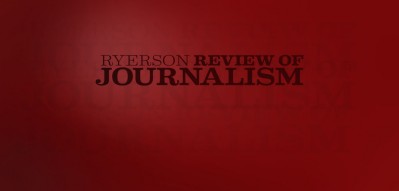It was a whale of a story.
Trapped beneath the Arctic ice were three California grey whales. They were stranded by an early freeze that October 1988 and were breathing through a shrinking hole in the ice. They would surely die.
However, an Inuit hunter soon spotted them and informed biologists back in the village. Curious, the scientists videotaped the mammals, then contacted the coast guard for help. An Anchorage newspaper caught wind of this, investigated and ran it as a front-page story. This in turn interested a local TV station which sent the video footage south where it played on national television. That evening a whale’s snout burst upon millions of screens. It lunged through an ice hole and sprayed water across a bleak, frozen backdrop. These poor creatures were hanging on for dear life!
In no time, 26 broadcasting companies and nearly one hundred print reporters (from as far as Australia) invaded the outpost of Barrow, Alaska. The journalists noted every development in the drama: the icebreaker cometh, Greenpeace and the National Guard to the rescue, and the Russians are coming! The Russians are coming! Then, on the fourteenth day a team of government-hired Inuit cut a series of holes leading the mammals to open water.
The whales were free!
That same day in Barrow a house fire incinerated three Inuit children. Their driftwood shack sat across from the fire station which was empty. The firemen had knocked off early, exhausted from a week of cutting holes in the ice. The fire was never reported.
Media circus. Feeding frenzy. Riding the bandwagon. Pack journalism. It has many names, but one meaning and that is the denigration of journalism. When it strikes, journalists become unthinking, fearful and just silly: enshrining Oliver North, revealing Barbara Dodd’s sex life and taking us all to Woodstock…again. What’s worse, it makes journalists uncritical and passive, and opens them to manipulation.
Corporations know. Coca-Cola Limited surely adored all the publicity surrounding its new Coke in 1985. Governments, too, are wise. Said Lyndon Johnson once: “Reporters are puppets. They merely respond to the pull of the most powerful strings.” In 1964, LBJ jerked the strings when North Vietnamese boats “attacked” two US destroyers in the Gulf of Tonkin. Johnson and his successor, Mr. Nixon, kept tugging for seven years-eventually spilling the “Vietnam conflict” into neighboring Laos-until a former US defence official stepped forward and revealed The Pentagon Papers to The New York Times and The Washington Post.
In 1990, the puppets dance to the War on Drugs. Papers “investigate” teenage overdoses. Newsweeklies declare “A Deadly Plague of Drugs.” TV cameras stake out Times Square in search of crack traffic. All this despite an across-the-board decline in drug use since the late seventies. All this while poverty, unemployment and despair -the roots of drug abuse-fester beneath the nose of the media. Instead, their eyes are fixed on the latest FBI vs. drug baron showdown, being played out far from the under-funded rehabilitation centres.
Battles, of course, are the archetypical news story: a black and white conflict. Poverty, on the other hand, is too complicated to explain in a sound bite or a 21-word lead. Further, poverty has been done before. After all, news is “new.” New was the Sandinistas, then nuclear disarmament, then Ethiopia, then apartheid, then Qaddafi, then Iranscam, then the intifada, and now, in early 1990, the environment. These stories have always lurked around, but each rises to the surface only when the media decide to shine a spotlight on its face. Then, all eyes zero in on that one event and all mouths repeat the same facts. It becomes the Crisis of the Week. And what does the public think?
“It’s the old self-fulfilling prophecy,” wrote Tom Wolfe. “Once it’s on TV and allover the newspapers, people figure it’s important. They figure they got to get excited about it.”
And they figure that the media must be right, that it must be true. Just ask Susan Nelles.
The fact is that 7,000 Third World children die each day of dehydration and it’s normal; a local baby falls into a well and it’s headline coverage. Journalism is a business that capitalizes on the misery of others. It sells murders, rapes, bombings, natural disaster, business corruption, private scandal and political upheaval to a waiting audience. Journalists can impart meaning to this suffering and encourage change. But journalists can also manufacture hysteria and promote ignorance. Instead of communicating knowledge and ideas, journalists say a lot of nothing.
And that’s a story.
About the author
Allan Tong was the Editor for the Spring 1990 issue of the Ryerson Review of Journalism.
